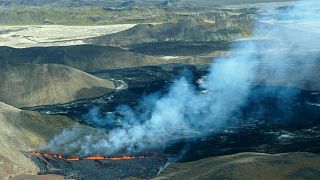Researchers from University of New Hampshire, University of Kentucky, Texas A&M University, and Florida State University published a new paper in the Journal of Marketing that examines the effect among salespeople of three negative personality traits – Machiavellianism, narcissism, and psychopathy.
The study, forthcoming in the Journal of Marketing, is titled “Understanding the Performance Effects of ‘Dark’ Salesperson Traits: Machiavellianism, Narcissism, and Psychopathy” and is authored by Cinthia B. Satornino, Alexis Allen, Huanhuan Shi, and Willy Bolander.
What makes a good salesperson?
Ads for sales jobs usually emphasize a preference for positive personality traits such as self-motivation, ability to be a team player, ethical behavior, and enthusiasm. Academic research also has traditionally focused on positive performance drivers, such as adaptiveness, conscientiousness, openness, and extraversion. Allen says that “While hiring people with these traits is desirable, it ignores the importance among salespeople of three negative traits – Machiavellianism, narcissism, and psychopathy – collectively known as the dark triad (DT).” Except for CEOs, lawyers, and celebrities, salespeople score higher on these dark traits than all other professions, which has led to sales professionals being characterized as conniving snakes.
That these dark personalities are employed by sales organizations suggests the ability of some salespeople to mask the dysfunctional manifestations of DT traits, such as callous self-interest, with more functional ones, such as charisma, during the hiring process. DT traits can offer significant advantages for some salespeople to get ahead and secure longer tenures. But there are downsides in the long run, too. Over time, the self-interested, antagonistic behaviors associated with DT traits are likely to undermine their relationships with colleagues, diminish their social capital, and subsequently reduce their performance.
The researchers conducted two studies to explore how and why dark salespeople persevere, and even thrive, in organizations. They investigate: (1) how dark salespeople perform over time relative to their low DT peers and (2) how ambient social structures, such as organizational social networks into which salespeople are embedded, influence these salespeople’s performance.
The first study provides empirical evidence that narcissism and psychopathy allow dark salespeople to succeed in the short term, but eventually lead to a “fall from grace,” including lost performance gains. In contrast, results show that Machiavellianism produces little in the short term, but manifests in long-term performance benefits.
The second study measures the reach efficiency of the dark personality’s social network. When a person’s network exhibits high reach efficiency, information about their actions becomes socially visible to others (i.e., friends of friends) who are indirectly connected to the dark personality. Low reach efficiency, however, impedes the spread of information and delays the social visibility of individual actions. Satornino explains that “If the network structure obscures information regarding the misdeeds of a dark salesperson, it enhances the probability for performance-enhancing cooperation between the dark personality and his or her unsuspecting peers.”
Results show that narcissism and psychopathy influence performance similarly, while Machiavellianism has the inverse effect. When reach efficiency is high, narcissism and psychopathy lead to decreased sales performance in subsequent periods. On the other hand, those with Machiavellianism benefit from high reach efficiency, which results in enhanced performance in subsequent periods.
The research team offers three key recommendations for chief sales officers:
- Hiring managers should be trained specifically to recognize signs of DT traits in the interview process using tools such as behavioral questions that highlight past or potential behaviors and characteristics typical of dark personalities.
- Sales managers should be trained to be cognizant of the performance patterns that may signal a dark personality to determine if interventions are needed.
- Sales managers should leverage social networks and peer feedback to facilitate unmasking dark personalities.
Full article and author contact information available at: https://doi.org/10.1177/00222429221113254
About the Journal of Marketing
The Journal of Marketing develops and disseminates knowledge about real-world marketing questions useful to scholars, educators, managers, policy makers, consumers, and other societal stakeholders around the world. Published by the American Marketing Association since its founding in 1936, JM has played a significant role in shaping the content and boundaries of the marketing discipline. Shrihari Sridhar (Joe Foster ’56 Chair in Business Leadership, Professor of Marketing at Mays Business School, Texas A&M University) serves as the current Editor in Chief.
https://www.ama.org/jm
About the American Marketing Association (AMA)
As the largest chapter-based marketing association in the world, the AMA is trusted by marketing and sales professionals to help them discover what is coming next in the industry. The AMA has a community of local chapters in more than 70 cities and 350 college campuses throughout North America. The AMA is home to award-winning content, PCM® professional certification, premiere academic journals, and industry-leading training events and conferences.
https://www.ama.org
JOURNAL
Journal of Marketing
ARTICLE TITLE
Understanding the Performance Effects of “Dark” Salesperson Traits: Machiavellianism, Narcissism, and Psychopathy






